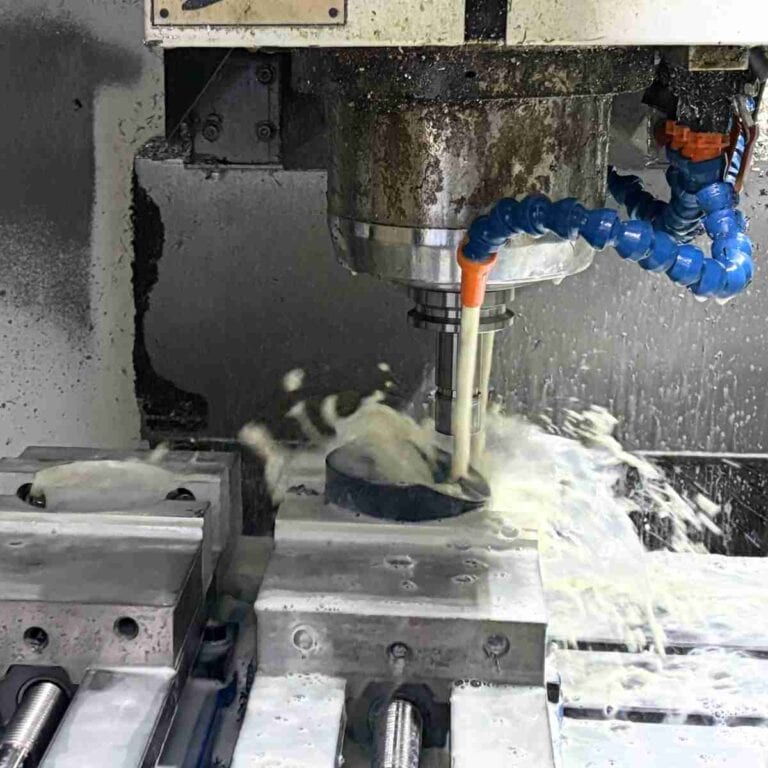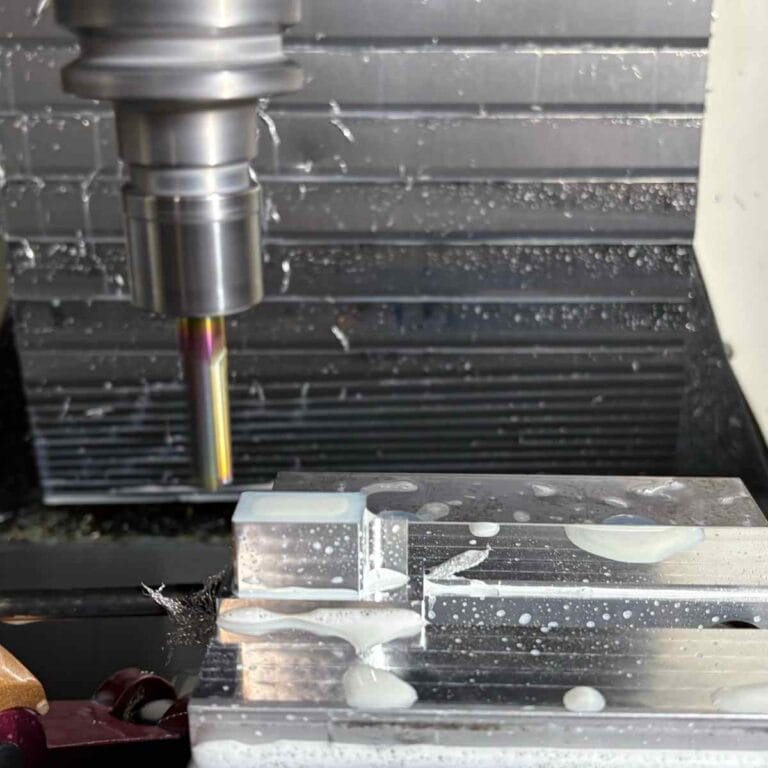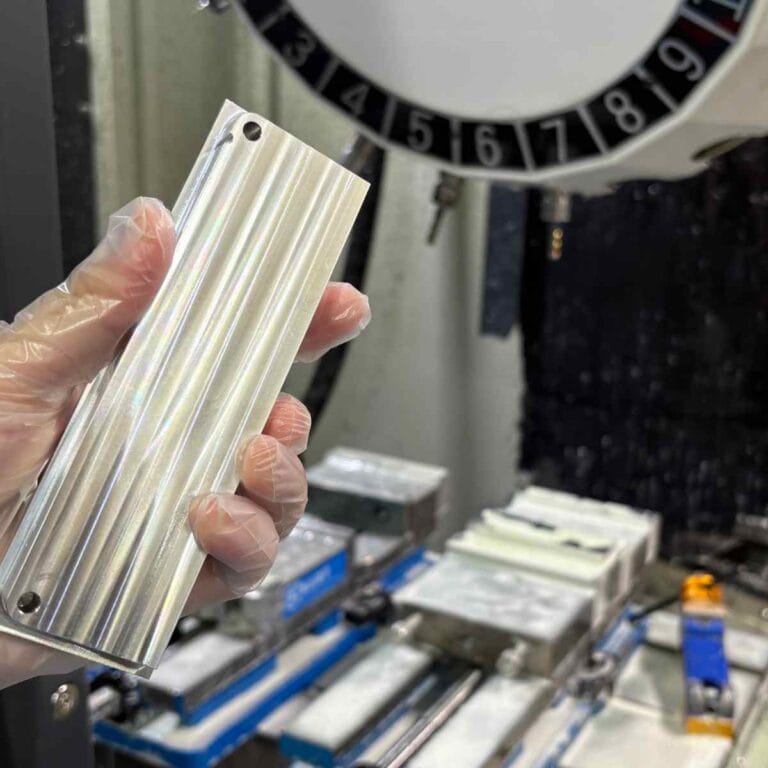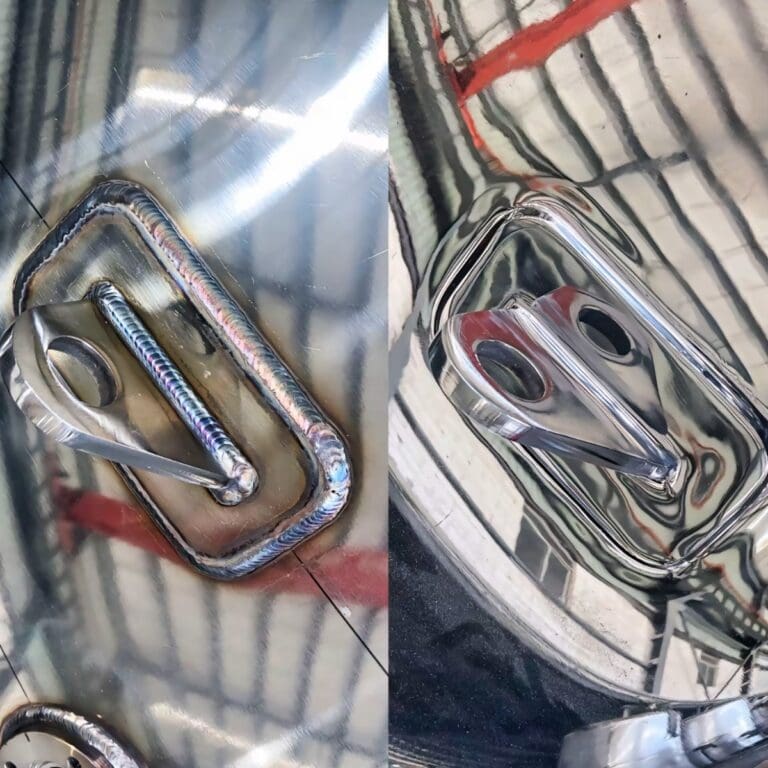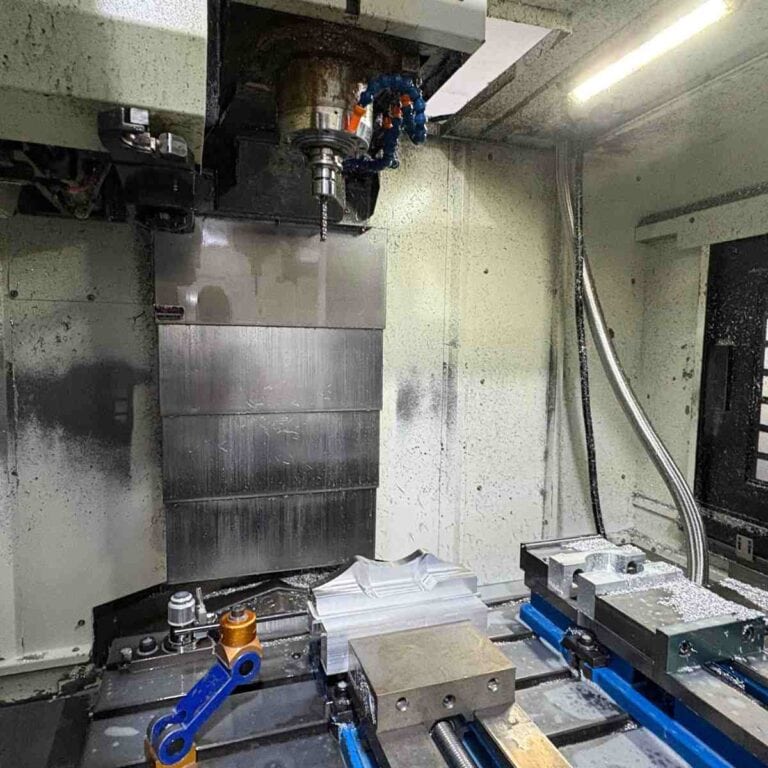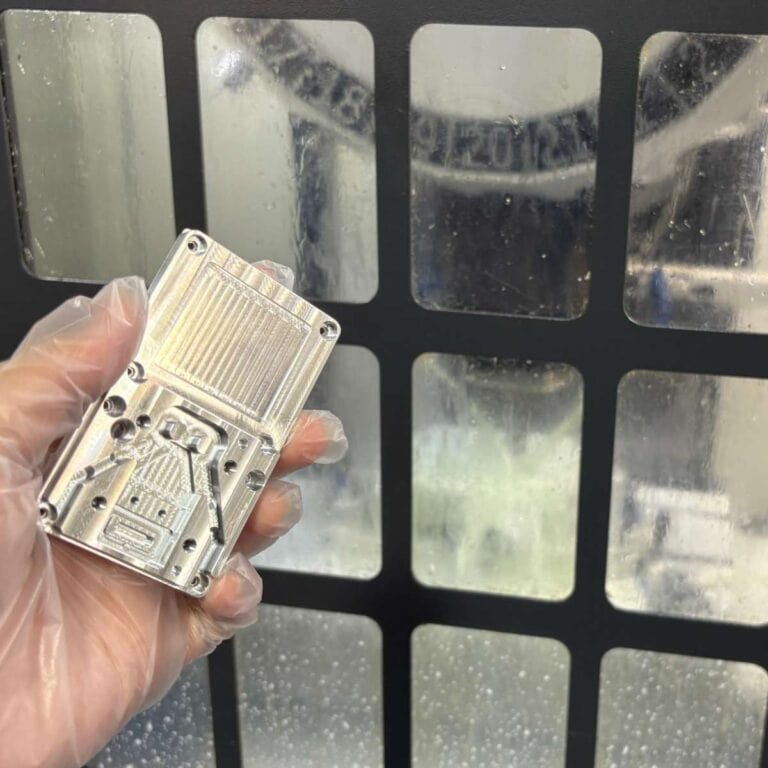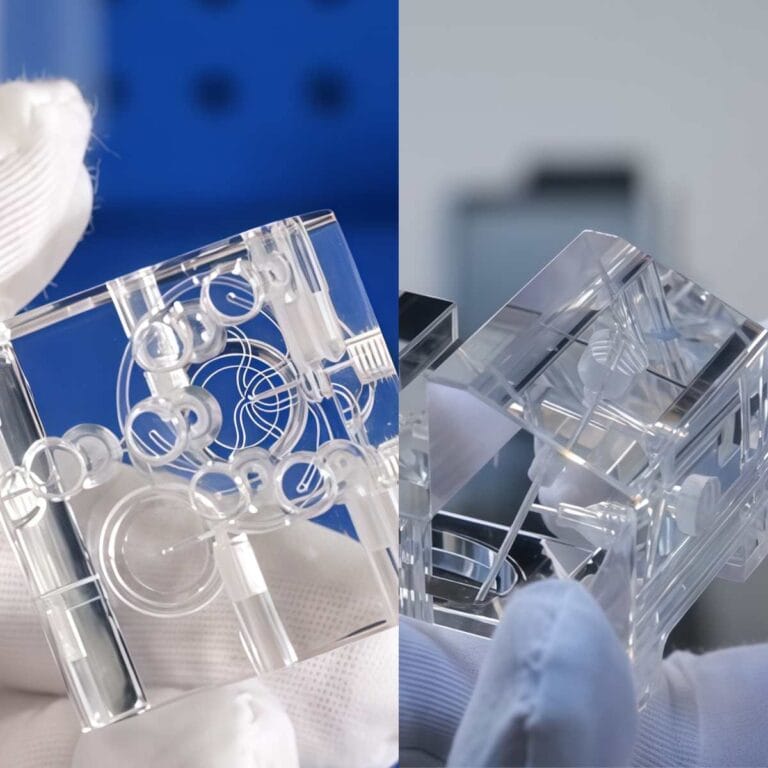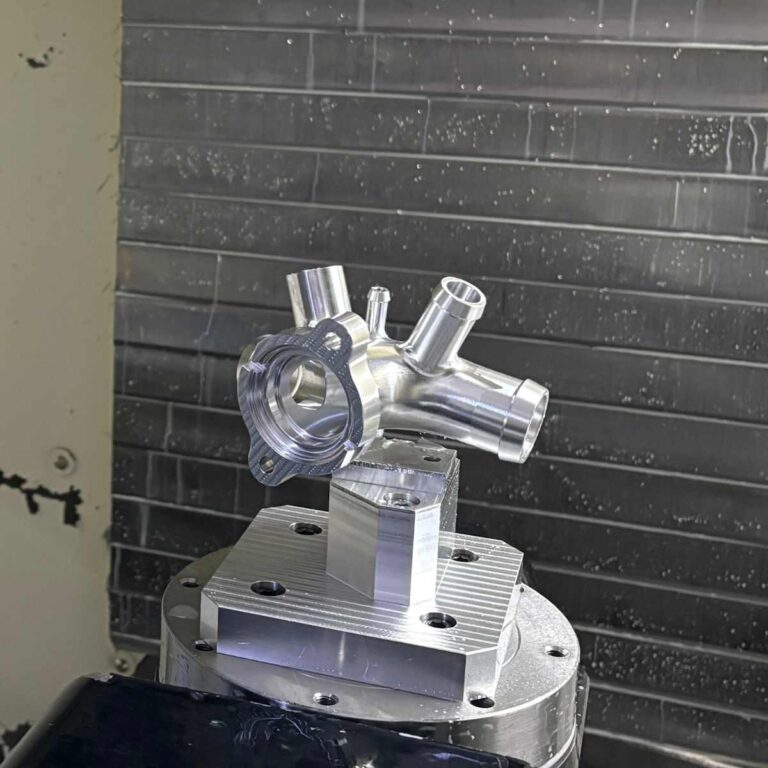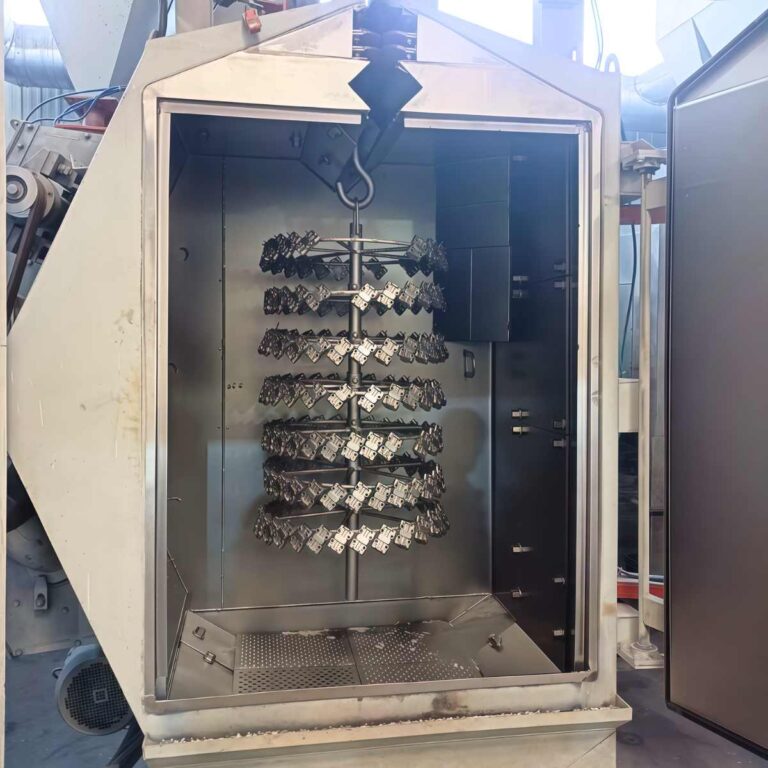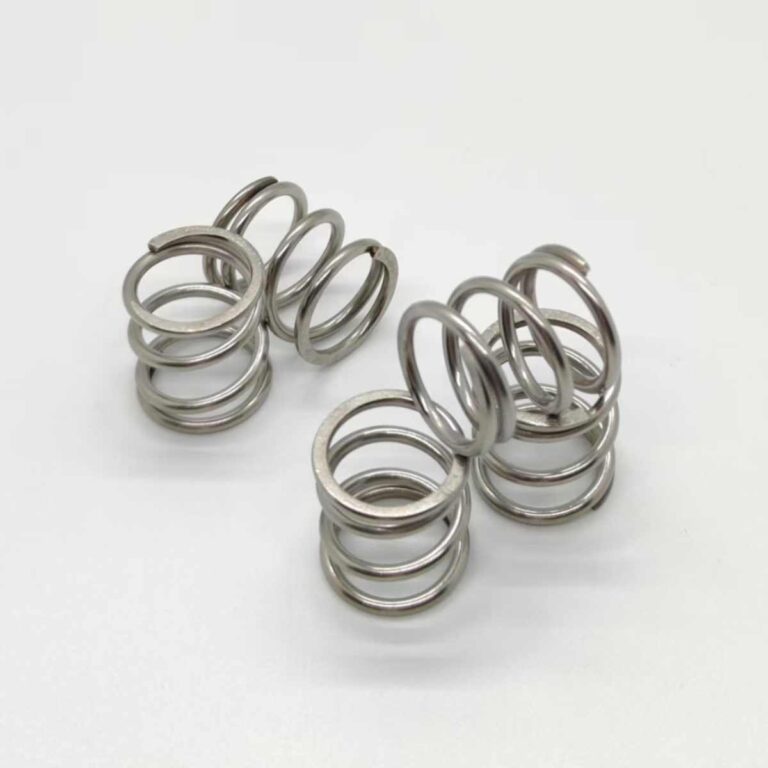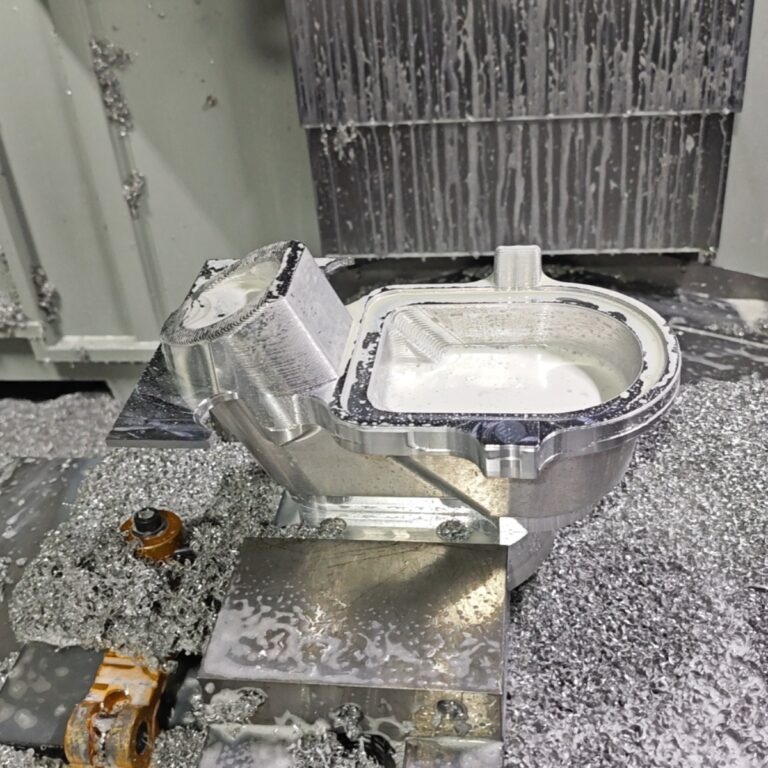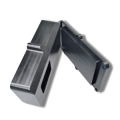Aluminum is valued for its strength, light weight, and corrosion resistance. Yet, its surface often requires additional finishing to meet specific functional and aesthetic needs. From anodizing to powder coating, understanding the main types of aluminum finishes helps you enhance durability, appearance, and performance for any CNC or manufacturing project.
What Are Aluminum Finishes
Aluminum finishes refer to the surface treatments applied to aluminum parts to improve their appearance, durability, corrosion resistance, and functionality. These finishes protect the raw metal from oxidation, enhance mechanical strength, and deliver specific aesthetic styles such as matte, glossy, or brushed looks.
Get 20% offf
Your First Order
Common types of aluminum finishes include:
As Machined Finish – The natural surface straight from CNC machining.
Anodizing – Strengthens the surface and adds color or protection.
Powder Coating – Creates a durable, decorative coating in various textures.
Bead Blasting – Produces a uniform matte surface by removing tool marks.
Chemical Film (Alodine) – Offers corrosion protection while maintaining conductivity.
Polishing and Brushing – Adds a mirror-like or directional metallic texture.
E-Coating or PVDF Coating – Improves outdoor durability and weather resistance.
Each finishing method serves different applications—from aerospace and automotive components to consumer electronics and robotics parts.
Choosing the right aluminum finish ensures your CNC parts deliver both precision performance and visual excellence.
10 Common Types of Aluminum Finishes
From sleek polished looks to high-durability coatings, aluminum finishes bring both beauty and performance to modern manufacturing. Whether you’re designing precision CNC parts or large-scale industrial components, the right surface treatment can make all the difference. Let’s explore the 10 most common types of aluminum finishes and see how each one enhances function, appearance, and product value.
1. As Machined Finish
The As Machined Finish refers to the natural surface condition of aluminum parts directly after CNC milling or turning — without any secondary polishing or coating. It is the most cost-effective aluminum finish since no additional processing is required, making it ideal for functional prototypes, internal components, or non-cosmetic parts.
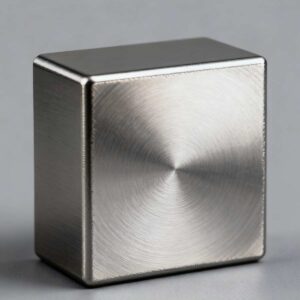
Depending on the machining parameters, the surface roughness typically ranges from Ra 0.2 µm to 3.2 µm, while maintaining precise dimensional tolerances up to ±0.01 mm. The surface retains fine tool marks or cutter paths, which can sometimes create a subtle metallic pattern.
Although visually raw, the as-machined surface ensures excellent dimensional accuracy, flatness, and machinability. Many engineers prefer this finish for parts that will undergo further surface treatments such as anodizing, plating, or painting.
If a smoother or shinier appearance is needed, additional mechanical processes such as sanding, buffing, or vibratory finishing can be applied to enhance surface uniformity before coating or assembly.
Key Features:
Lowest cost and fastest lead time
Ra 0.2–3.2 µm surface roughness
Maintains full dimensional accuracy
Ideal for prototypes and internal assemblies
Compatible with later finishing processes
2. Anodizing
Anodizing is one of the most common aluminum surface finishes used to improve corrosion resistance, wear resistance, and appearance. It is an electrochemical process that transforms the aluminum surface into a durable oxide layer, which becomes part of the metal itself — not a coating that can peel off.
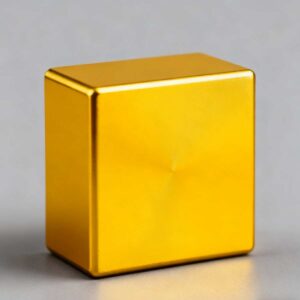
During anodizing, aluminum parts are immersed in an acidic electrolytic bath, and an electric current is applied. This causes the surface to oxidize, forming a porous aluminum oxide layer that can later be sealed or dyed for decorative purposes. The oxide layer thickness typically ranges from 5 µm to 25 µm, depending on the desired function.
Anodized aluminum surfaces are harder, more durable, and electrically insulating, making this finish ideal for applications in aerospace, electronics, automotive, and architectural industries. The process also enhances paint adhesion and color stability, giving products a refined metallic appearance with uniform texture.
Key Features:
Excellent corrosion and abrasion resistance
Strong adhesion for paints, glues, and primers
Customizable oxide thickness for durability and aesthetics
Can be clear, black, or dyed in various metallic colors
Environmentally friendly and non-toxic process
3. Powder Coating
Powder coating is a popular dry finishing process used to enhance the surface durability and visual appeal of aluminum parts.Instead of using liquid paint, this method applies electrostatically charged powder particles—typically made of epoxy, polyester, or hybrid resins—onto the aluminum surface. The coated part is then cured under heat, forming a smooth, uniform, and durable layer.
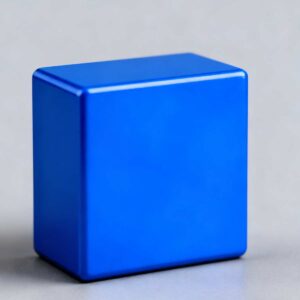
This finish offers excellent resistance to corrosion, UV exposure, scratches, and chemicals, making it ideal for automotive, architectural, and consumer product applications.
Unlike traditional liquid coatings, powder coating produces no volatile organic compounds (VOCs), making it an environmentally friendly option that reduces material waste and improves coating efficiency.
Available in a wide range of colors, gloss levels, and textures, powder coating allows designers to achieve both functional protection and aesthetic customization—from matte black to high-gloss metallic finishes.
Key Features:
Superior corrosion, UV, and wear resistance
Smooth and uniform surface finish
Wide variety of color and texture options
Eco-friendly process with zero VOC emissions
Excellent coverage for complex shapes
4.Bead Blasting
Bead blasting, also known as sandblasting, is a mechanical surface finishing process used to clean, smooth, or texture aluminum parts.It involves propelling fine glass beads, aluminum oxide, or other abrasive media at high pressure onto the aluminum surface. This process removes machining marks, surface oxides, and minor imperfections—resulting in a uniform matte or satin finish.
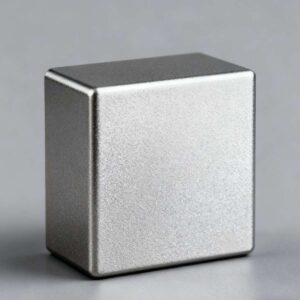
The bead blasting finish not only enhances the appearance of aluminum parts but also improves surface adhesion for subsequent coatings such as anodizing or painting.
It’s especially popular in aerospace, electronics, and consumer product manufacturing, where a consistent, non-reflective surface is desired.
By adjusting the media size, pressure, and exposure time, engineers can control the surface texture—from a soft satin sheen to a more rugged matte appearance—while maintaining tight tolerances and dimensional accuracy.
Key Features:
Uniform matte or satin texture
Removes tool marks and surface oxidation
Improves coating and paint adhesion
Enhances aesthetics for visual or tactile appeal
Suitable for pre-anodizing surface preparation
5. Chemical Film / Alodine
Chemical film coating, also known as Alodine or chromate conversion coating, is a chemical surface treatment used to protect aluminum parts from corrosion while maintaining their electrical conductivity.
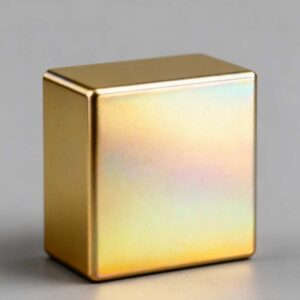
Unlike anodizing, it does not require electricity. Instead, the aluminum part is immersed in a chromate-based solution, where a controlled chemical reaction forms a thin, protective chromium oxide layer on the surface.
This film enhances corrosion resistance, improves paint adhesion, and preserves surface conductivity, making it an ideal choice for aerospace, defense, and electronic industries where precise electrical performance is required.
The resulting layer is typically 0.3–2.5 µm thick, offering uniform coverage without altering part dimensions — perfect for tight-tolerance CNC machined parts.
Alodine coatings can appear gold, yellow, or clear, depending on the formulation and application. It is also an excellent pre-treatment for powder coating or painting, ensuring stronger adhesion and longer service life.
Key Features:
Excellent corrosion resistance and electrical conductivity
Ideal pre-treatment for painting and powder coating
Thin, uniform coating with minimal dimensional impact
Fast, cost-effective, and non-electrolytic process
Widely used in aerospace, electronics, and precision components
6. Polishing
Polishing is a mechanical surface finishing process that enhances the smoothness and gloss of aluminum parts. It removes small surface defects, tool marks, and oxidation layers, creating a mirror-like or satin appearance depending on the polishing method and compound used.
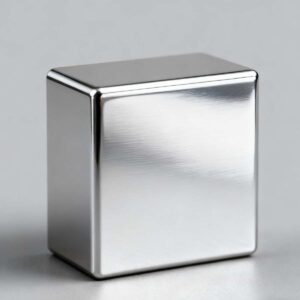
During polishing, abrasive compounds or polishing wheels are applied to the aluminum surface under controlled pressure and motion. The process gradually refines the surface texture, reducing surface roughness from Ra 1.6 µm to as low as Ra 0.05 µm, achieving a bright, reflective finish.
Polishing not only improves the aesthetic appeal of aluminum parts but also enhances corrosion resistance and cleanability, as smoother surfaces reduce contamination buildup.
It’s widely used in automotive, medical, aerospace, and consumer electronics industries for parts requiring both functionality and a premium appearance.
Depending on the desired outcome, polishing can be done in multiple stages — rough, intermediate, and fine — or combined with anodizing for a durable, high-gloss effect.
Key Features:
Produces high-gloss or mirror-like surfaces
Reduces surface roughness and tool marks
Enhances corrosion resistance and aesthetics
Suitable for decorative or precision parts
Can be combined with anodizing for superior finish
7. Brushing
Brushing is a mechanical surface treatment that produces a fine, linear texture on aluminum surfaces using abrasive belts or brushes.The process removes minor imperfections, machining marks, and oxidation, resulting in a satin or directional grain finish with a soft metallic sheen.
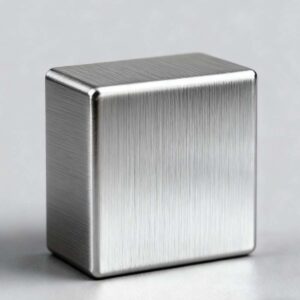
During brushing, the aluminum part is moved against a rotating abrasive belt or wire brush under controlled pressure. The motion direction determines the grain pattern — typically straight, circular, or cross-hatched.
This finish not only enhances the visual appearance of aluminum parts but also helps mask fingerprints, scratches, and handling marks.
Brushed aluminum is widely used in consumer electronics, automotive interiors, appliances, and architectural panels for its modern, elegant, and tactile appeal.
It can also be combined with anodizing to achieve both durability and aesthetics — retaining the brushed texture under a protective oxide layer.
Key Features:
Distinctive linear satin or metallic texture
Hides fingerprints and small scratches
Improves surface consistency and aesthetics
Ideal for decorative or exposed aluminum parts
Can be sealed or anodized for enhanced protection
8. Bright Dipping
Bright dipping is a chemical polishing process that enhances the reflectivity and appearance of aluminum surfaces by removing a very thin oxide layer and surface irregularities.Unlike mechanical polishing, it achieves a high-gloss mirror finish through controlled chemical reactions — without any abrasive contact.
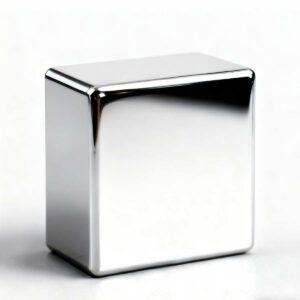
In this process, aluminum parts are immersed in a heated acid bath containing phosphoric and nitric acids.
The chemical action smooths microscopic peaks and valleys on the surface, resulting in a bright, reflective appearance with excellent uniformity.
After dipping, parts are typically anodized to lock in the shine and improve corrosion resistance.
Bright dipping is ideal for applications requiring a decorative, highly reflective finish, such as automotive trims, lighting reflectors, architectural panels, and consumer electronics.
The process preserves precise dimensions, making it suitable for tight-tolerance CNC machined aluminum parts.
Key Features:
Produces mirror-like, high-gloss surface finish
Smooths micro imperfections without abrasives
Often combined with anodizing for better protection
Maintains dimensional accuracy
Excellent for decorative and reflective components
9. E-Coating
E-Coating (also known as electrophoretic coating or electrodeposition coating) is a surface finishing process that uses electrical current to deposit a uniform, protective coating onto aluminum parts.
It combines the durability of powder coating with the precision of wet paint, making it one of the most reliable and eco-friendly coating solutions in modern manufacturing.
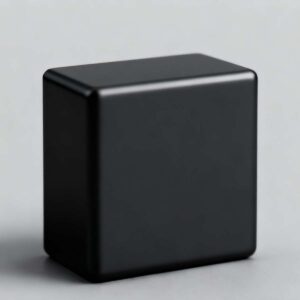
During E-coating, aluminum parts are immersed in a water-based paint bath containing charged paint particles.
When an electric voltage is applied, these particles migrate and bond evenly onto the metal surface, forming a thin, uniform, and corrosion-resistant film.
The coated parts are then baked in an oven to cure the finish, ensuring strong adhesion and durability.
E-coating provides excellent corrosion resistance, wear protection, and chemical stability, even in complex geometries or recessed areas.
It’s widely used in automotive components, aerospace structures, electronics housings, and architectural products that require consistent, high-quality finishes.
Key Features:
Uniform coating thickness, even in complex shapes
Excellent corrosion and chemical resistance
Environmentally friendly (water-based process)
Compatible with anodizing or powder coating topcoats
Ideal for high-volume industrial applications
10. PVDF Coating
PVDF Coating (Polyvinylidene Fluoride Coating) is a high-performance fluoropolymer finish known for its exceptional weather resistance, UV stability, and long-lasting color retention.This coating type is widely used for aluminum surfaces that require superior outdoor durability and corrosion protection — especially in architectural and industrial applications.
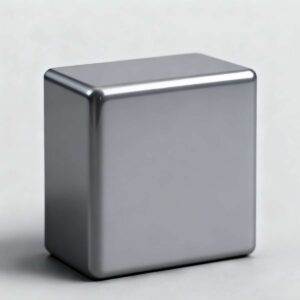
PVDF coatings are typically applied through a spray or coil coating process, where multiple layers of PVDF-based resin are cured under high heat to form a dense, durable film.
The result is a non-chalking, non-fading surface that resists harsh environments, including saltwater, acid rain, and extreme sunlight exposure.
Compared to other finishes, PVDF coating offers the best long-term protection and maintains its gloss and color for decades with minimal maintenance.
It’s a preferred choice for building façades, curtain walls, window frames, roofing panels, and high-end architectural aluminum parts.
Key Features:
Outstanding weather and UV resistance
Excellent color and gloss retention
High chemical and corrosion resistance
Smooth, easy-to-clean surface
Ideal for architectural and outdoor aluminum applications
How to Choose the Right Aluminum Finish for Your Project
Selecting the right aluminum finish is critical to balancing performance, appearance, and cost. Each surface treatment offers distinct advantages depending on where and how your product will be used. Below are the key factors to consider when choosing the ideal finish for your aluminum components.
Application Environment
The working environment greatly affects your finish choice.
For outdoor or marine environments, anodizing, PVDF coating, or E-coating provide strong corrosion resistance against moisture, salt, and UV rays.
For indoor or cleanroom applications, as-machined or brushed finishes are often sufficient.
Always assess temperature, humidity, and exposure to chemicals before deciding.
Mechanical and Protective Requirements
If your aluminum parts need high wear resistance or protection, consider hard anodizing, powder coating, or chemical film (Alodine).
These coatings enhance hardness, prevent oxidation, and extend the service life of machined components.
For precise or functional surfaces, finishes like polishing or bead blasting offer smoothness without affecting tolerances.
Visual and Brand Aesthetics
Finishes also define a product’s brand identity.
If you want a premium metallic look, opt for bright dipping, polishing, or brushed finishes.
For colored or decorative applications, anodizing and powder coating allow custom hues and gloss levels.
Matching surface texture and reflectivity with your brand’s visual style enhances perceived value.
Budget and Production Timeline
Each surface treatment varies in cost, preparation time, and scalability.
As-machined and bead-blasted finishes are cost-effective for prototypes and small batches, while anodizing or PVDF coating suit large-scale production requiring durability.
Consider your budget, delivery time, and quantity to find the best balance between performance and efficiency.
Industrial Applications of Aluminum Finishes
Aluminum surface finishes play a vital role across many industries — from automotive to aerospace — enhancing both performance and appearance. The right finish ensures that each aluminum component meets its environmental, mechanical, and visual demands. Below is an overview of how aluminum finishing techniques are applied in key industrial sectors.
| Industry | Common Finishes | Purpose / Benefits |
| Automotive & Mobility | Anodizing, Powder Coating, Chemical Film | Corrosion resistance, aesthetics, lightweight protection |
| Aerospace Components | Hard Anodizing, Alodine, PVDF Coating | Wear resistance, thermal protection, durability |
| Electronics & Robotics | Bead Blasting, Anodizing, E-Coating | Heat dissipation, smooth finish, electrical insulation |
| Architecture & Lighting | PVDF Coating, Bright Dipping, Polishing | UV resistance, decorative effects, reflectivity |
| Medical & Consumer Products | Brushing, Polishing, E-Coating | Clean appearance, hygiene, wear resistance |
FAQs
What Are The Different Types Of Aluminum Finishes?
There are over 10 main types of aluminum finishes, including as machined, anodizing, powder coating, bead blasting, chemical film, polishing, brushing, bright dipping, E coating, and PVDF coating. Each offers different levels of corrosion resistance, durability, and surface aesthetics for industrial applications.
What Is The Best Finish For Aluminium?
For most engineering applications, Type III hard anodizing is considered the best. It provides up to 60–70 µm oxide thickness, improving wear resistance by 200 percent and corrosion protection by 5–10 times compared to raw aluminum, making it ideal for aerospace, marine, and automotive components.
What Is The Finish Of Aluminum Material?
The natural aluminum surface, called mill finish, has a metallic gray color with visible machining marks. Its surface roughness typically ranges from Ra 0.8 to 3.2 µm depending on machining precision. While dimensionally accurate, it has limited corrosion resistance without further treatment.
What Surface Finish Is Preferred On Aluminum?
The preferred surface finish depends on the part’s function and working environment. For precision components, Ra ≤ 0.8 µm (polished or bead blasted) is often required. For outdoor or decorative applications, anodized or powder coated finishes extend lifespan by 3 to 5 times under corrosion exposure.
Conclusion
Aluminum finishes play a vital role in improving durability, corrosion resistance, and visual appeal across industries. From anodizing to powder coating, each finish enhances both protection and aesthetics. At TiRapid, we combine precision CNC machining with expert aluminum surface finishing to deliver reliable, high-quality parts for automotive, aerospace, electronics, and more. Contact us today for tailored solutions.

